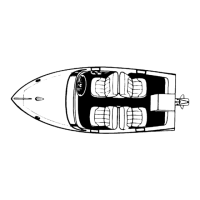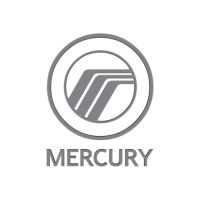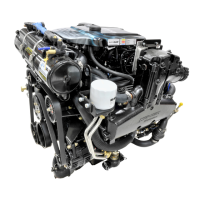5A-2 - FUEL DELIVERY SYSTEMS AND FUEL PUMPS 90-823225--1 1096
Precautions
!
WARNING
Always disconnect battery cables from battery
BEFORE working on fuel system to prevent fire
or explosion.
!
WARNING
Be careful when changing fuel system compo-
nents; gasoline is extremely flammable and
highly explosive under certain conditions. Be
sure that ignition key is OFF. DO NOT smoke or
allow sources of spark or flame in the area while
changing fuel filters. Wipe up any spilled fuel im-
mediately.
!
WARNING
Make sure that no fuel leaks exist before closing
engine hatch.
!
CAUTION
DO NOT operate engine without cooling water
being supplied to seawater pickup pump, or
pump impeller will be damaged and subsequent
overheating damage may result.
Fuel Delivery System
Recommendations
!
WARNING
Boating industry standards (BIA, ABYC, etc.)
federal standards and Coast Guard regulations
MUST BE adhered to when installing fuel deliv-
ery system.
When designing and installing fuel delivery system,
the following information MUST BE observed:
1. Fuel tank should be mounted below carburetor
level, if possible. If tank is mounted above
carburetor level, gravity feed may cause carbure-
tor fuel inlet needle to unseat, and flooding may
result.
2. Fuel pickup should be at least 1 in. (25 mm) from
the bottom of the fuel tank to prevent picking up
water or other impurities.
3. Fuel lines used MUST BE Coast Guard approved
(USCG type A) and MUST NOT BE SMALLER
THAN 3/8 in. (9.5 mm) I.D. On installations where
long lines or numerous fittings are required, larg-
er size lines should be used.
4. Fuel line should be installed free of stress and
firmly secured to prevent vibration and/or chaf-
ing.
5. Sharp bends in fuel line should be avoided.
6. A flexible fuel line must be used to connect fuel
line to engine to absorb deflection when engine
is running.

